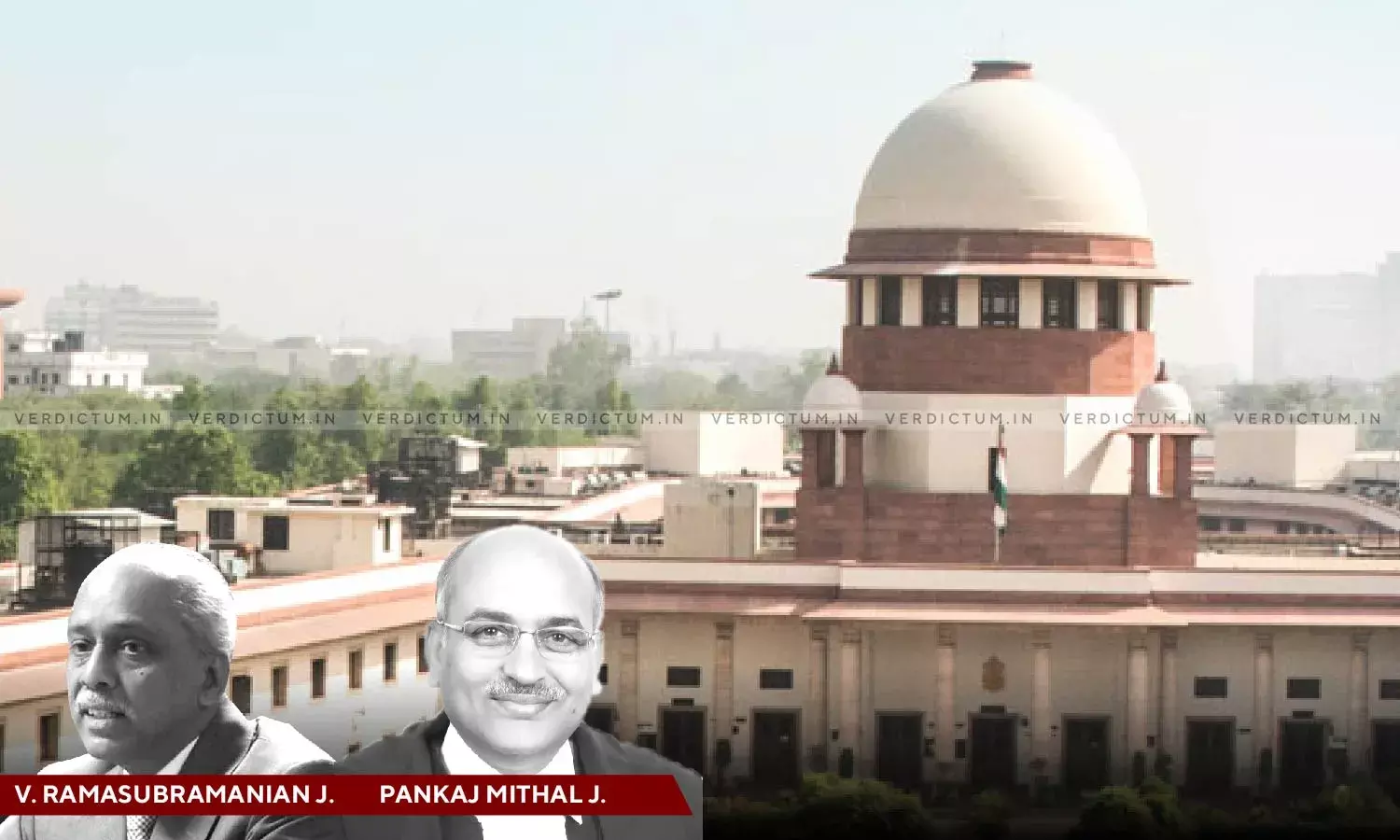Waiting To Get Clearance Of Right Over Additional TDR In Pending Acquisition Proceeding Does Not Tantamount To Abandonment Of Claim: SC

Noticing that the Appellants surrendered their land and accepted Transferable Development Rights (TDR) in lieu of compensation, the Supreme Court observed that all activities undertaken by the Appellant through their Architects till the handing over of possession of the land were not towards the development of amenity and for the grant of Additional TDR, rather, all those works were undertaken as part of the effort to make the Corporation accept the surrender of land and to grant TDR.
However, finding that during the period from 1996 to 2009, the right to claim additional TDR on land acquired under the Maharashtra Regional and Town Planning Act, 1966 was in suspended animation and the Appellants (owner of land) had to necessarily wait till the cloud over their right got cleared, a Two Judge Bench of Justice V. Ramasubramanian and Justice Pankaj Mithal observed that “the wait of the Appellants during the period of this cloudy weather does not tantamount to abandonment of claim”.
Advocate Pramod Agarwala appeared for the Appellant, whereas, Advocate Meera Mathur appeared for the Respondent.
Going by the background of the case, a Development Plan (DP) for Greater Mumbai was prepared for the period 1981-2001 and certain plots were reserved for purpose of ‘Recreation Ground’, which was admittedly owned by first Appellant. Later, in pursuance of power conferred under Maharashtra under Section 126 of Maharashtra Regional and Town Planning Act, 1966, the Planning Authority proceeded to acquire such plot and the Appellant filed an application for surrendering the said land. Thereafter, the Appellant wrote a letter to the Municipal Corporation, expressing their intention to develop the land sought to be surrendered. When Appellant was developing the amenity, the Deputy Chief Engineer requested for its access to the local people and permission to take over possession of the developed land. Simultaneously, the Appellant handed over formal possession of the land and NOC was granted.
While things stood thus, the Municipal Corporation issued a Circular restricting the grant of additional TDR in respect of amenities such as “Recreation Ground”, only for the structures allowed to be constructed within the reservations, to the extent of built-up area of such structures subject to a maximum of 15% area of the reservations. After the circular was set aside by this Court in the decision in Godrej and Boyce Manufacturing Company Limited, the Appellant made one more request for the grant of Additional TDR which was turned down by the Municipal Corporation.
The matter then reached High Court, wherein the petition was dismissed observing that the Appellants should be deemed to have abandoned their claim for additional TDR, since they came up with the writ petition only in the year 2010 challenging the rejection of the request for additional TDR made in the year 1998. Hence, the present appeal seeking a grant of a Development Rights Certificate for the construction and development of the amenity namely “Recreation Ground”.
After considering the submissions, the Apex Court noted that the claim made by the Appellants for grant of additional TDR was rejected by the Corporation and the same was challenged by the Appellants by way of a writ petition only after 12 years, which was interpreted by the High Court as abandonment of claim.
After going through the expression “prevailing policy,” mentioned in the communication by the Municipal Corporation vide Circular dated Apr 09, 1996, whereby the claim for TDR was rejected, the Apex Court stated that the law of abandonment is based upon the maxim “invito beneficium non datur”, which means that the law confers upon a man no rights or benefits which he does not desire.
However, “what was cited by the Municipal Corporation in their order of rejection dated 27.11.1998 as an impediment for the grant of additional TDR was the subject matter of challenge in the first round. It was made by the very appellant No.1 herein, though in respect of another property”, added the Bench.
The Bench, therefore, observed that if the said decision in the first round had gone against the Appellant, then the rejection of the claim for additional TDR based on “prevailing policy” would have become final and unquestionable.
Lastly, finding that whatever the Appellant had done through their Architects up to the date of handing over possession and getting the DRC, was not projected by them as the development of amenity, the Apex Court concurred with the view of the High Court that the Appellants did not develop the amenity so as to be entitled to additional TDR.
Cause Title: Godrej and Boyce Manufacturing Company and Anr. v. Municipal Corporation of Greater Mumbai and Ors.
Click here to read/download Judgment

